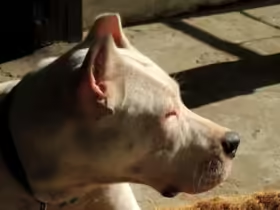Training a dog can be a rewarding experience, building a strong bond between you and your furry friend while ensuring good behavior. For beginners, understanding the fundamental principles of dog training is crucial. This guide will walk you through the essential dos and don’ts of dog training, helping you to create a positive and effective training environment.
1. The Dos of Dog Training
1.1. Be Consistent
- Establish Clear Commands: Use the same commands for specific behaviors every time. Consistency helps your dog understand what is expected and reinforces learning.
- Regular Training Sessions: Schedule short, regular training sessions to maintain your dog’s focus and retain their attention. Consistency in training helps reinforce good behavior and prevents confusion.
1.2. Use Positive Reinforcement
- Reward Good Behavior: Reinforce positive behavior with treats, praise, or playtime. Positive reinforcement encourages your dog to repeat the desired behavior.
- Timing of Rewards: Deliver rewards immediately after the desired behavior to help your dog make the connection between the behavior and the reward.
1.3. Be Patient and Calm
- Stay Calm: Approach training with patience and calmness. Your dog will respond better to a relaxed and positive demeanor, making training more enjoyable for both of you.
- Manage Expectations: Understand that learning takes time. Be patient with your dog’s progress and avoid getting frustrated.
1.4. Set Realistic Goals
- Break Down Training: Start with simple commands and gradually increase complexity. Breaking down training into manageable steps helps your dog learn more effectively.
- Celebrate Progress: Acknowledge and celebrate small victories. Recognizing progress motivates both you and your dog.
1.5. Provide Proper Exercise
- Physical and Mental Stimulation: Ensure your dog receives ample exercise and mental stimulation. A well-exercised dog is more focused and less likely to exhibit behavioral issues.
- Varied Activities: Incorporate different types of activities, such as walks, playtime, and puzzle toys, to keep your dog engaged and prevent boredom.
2. The Don’ts of Dog Training
2.1. Don’t Use Punishment
- Avoid Negative Reinforcement: Refrain from using physical punishment or harsh corrections. Punishment can lead to fear and anxiety, which may negatively impact your dog’s behavior and training progress.
- Focus on Positive Interaction: Instead of punishment, use positive reinforcement to encourage desired behavior and build a trusting relationship with your dog.
2.2. Don’t Overload with Commands
- Limit Commands: Avoid overwhelming your dog with too many commands at once. Focus on teaching one command at a time to ensure clarity and effectiveness.
- Keep Commands Simple: Use clear and simple commands to prevent confusion. Consistent language helps your dog understand and respond appropriately.
2.3. Don’t Ignore Socialization
- Expose to Different Environments: Socialize your dog by exposing them to various environments, people, and other animals. Proper socialization helps prevent behavioral issues and promotes a well-adjusted dog.
- Gradual Introduction: Introduce new experiences gradually to avoid overwhelming your dog. Positive socialization experiences contribute to a confident and well-behaved pet.
2.4. Don’t Skip Training Sessions
- Regular Practice: Consistent training is essential for reinforcing good behavior. Skipping training sessions can hinder progress and lead to setbacks.
- Stay Committed: Maintain a regular training schedule and continue practicing commands and behaviors to ensure lasting results.
2.5. Don’t Neglect Basic Needs
- Ensure Proper Care: Address your dog’s basic needs, such as food, water, and medical care, alongside training. A healthy and well-cared-for dog is more likely to respond positively to training.
- Comfort and Security: Provide a comfortable and secure environment for your dog to reduce stress and promote a positive training experience.
3. Effective Training Techniques
3.1. Clicker Training
- How It Works: Clicker training involves using a clicker device to mark desired behavior, followed by a reward. The click sound provides immediate feedback, helping your dog understand what behavior is being rewarded.
- Benefits: Clicker training is a positive reinforcement method that can improve learning and communication between you and your dog.
3.2. Leash Training
- Walking on a Leash: Teach your dog to walk calmly on a leash without pulling. Use treats and praise to reward good leash behavior and correct pulling gently.
- Leash Control: Maintain control of the leash and use clear commands to guide your dog. Practice regularly to reinforce good leash manners.
3.3. Crate Training
- Creating a Safe Space: Use a crate to provide your dog with a safe and secure space. Crate training can help with housebreaking and create a sense of comfort for your dog.
- Positive Association: Encourage positive associations with the crate by offering treats, toys, and praise when your dog enters the crate voluntarily.
4. Common Training Challenges and Solutions
4.1. Addressing Behavioral Issues
- Barking and Whining: Address excessive barking or whining by identifying the cause and providing appropriate training or redirection. Use positive reinforcement to reward calm behavior.
- Chewing and Digging: Prevent destructive chewing and digging by providing appropriate chew toys and redirecting your dog’s attention to suitable activities.
4.2. Dealing with Distractions
- Training in Different Environments: Practice commands and behaviors in various environments to help your dog remain focused despite distractions. Gradually increase the level of distraction as your dog improves.
- Gradual Exposure: Introduce distractions gradually and reward your dog for maintaining focus. This helps build their ability to respond to commands in different situations.
5. Building a Strong Bond Through Training
5.1. Positive Interaction
- Engage in Fun Activities: Incorporate play and positive interactions into training sessions. Fun activities strengthen your bond and make training enjoyable for both you and your dog.
- Mutual Respect: Show respect and understanding toward your dog’s needs and limitations. Building a respectful relationship enhances the effectiveness of training.
5.2. Consistent Communication
- Clear Commands: Use clear and consistent commands to communicate effectively with your dog. Consistent communication helps your dog understand and respond to your expectations.
- Feedback and Praise: Provide immediate feedback and praise to reinforce good behavior. Positive reinforcement strengthens your dog’s motivation to learn and behave.
Conclusion
Training a dog involves understanding and applying the essential dos and don’ts to ensure a successful and enjoyable experience. By being consistent, using positive reinforcement, and avoiding punishment, you create a positive learning environment for your dog. Addressing common challenges and incorporating effective training techniques further enhances the process.
Building a strong bond through training and positive interaction not only leads to a well-behaved dog but also strengthens the relationship between you and your furry companion. With patience, commitment, and the right approach, you can achieve training success and enjoy a harmonious life with your beloved dog.











Leave a Reply